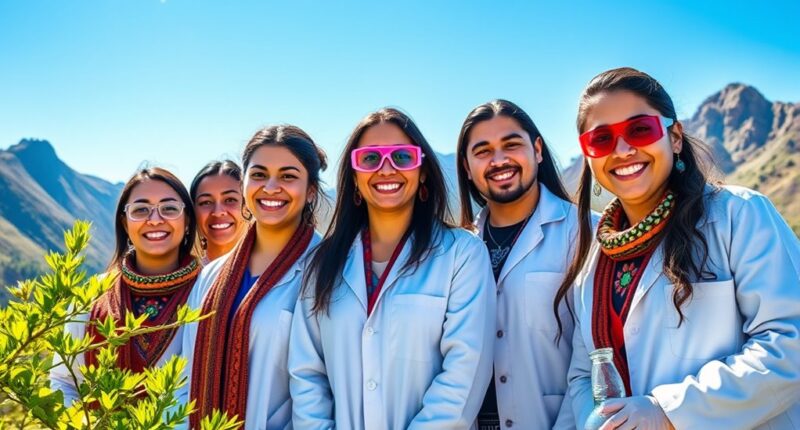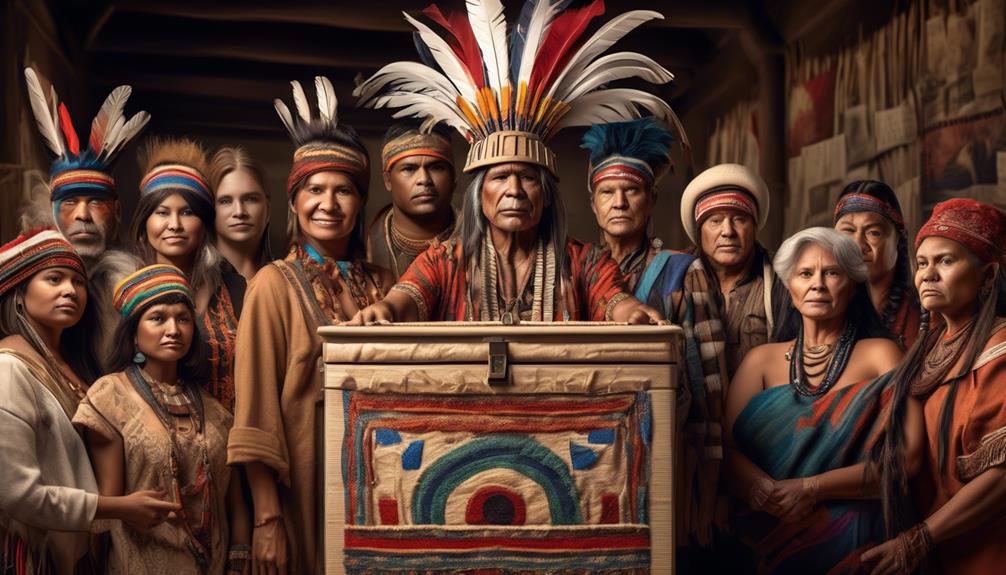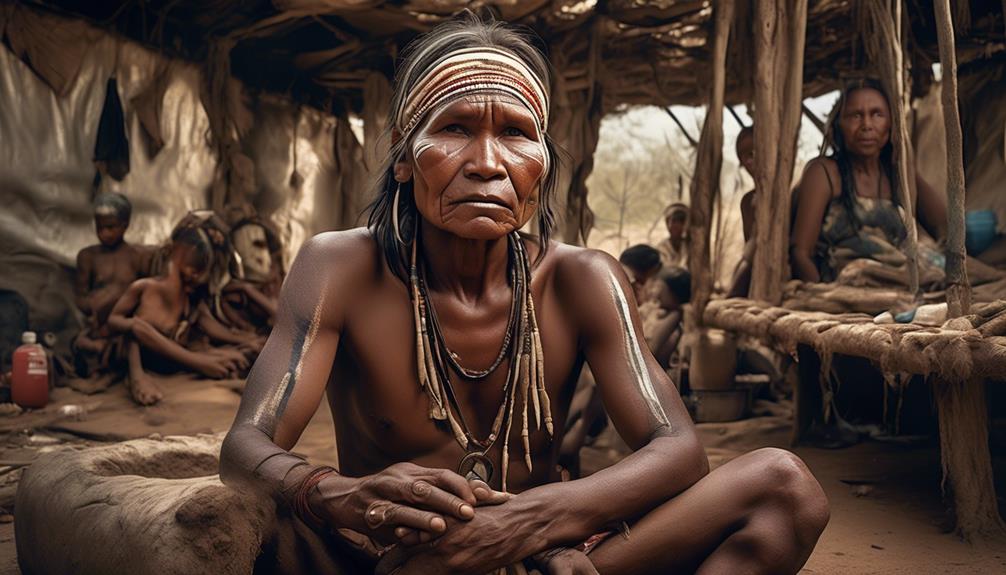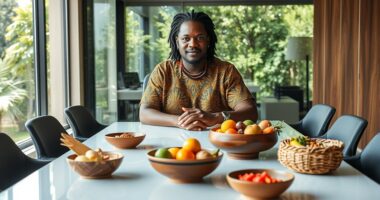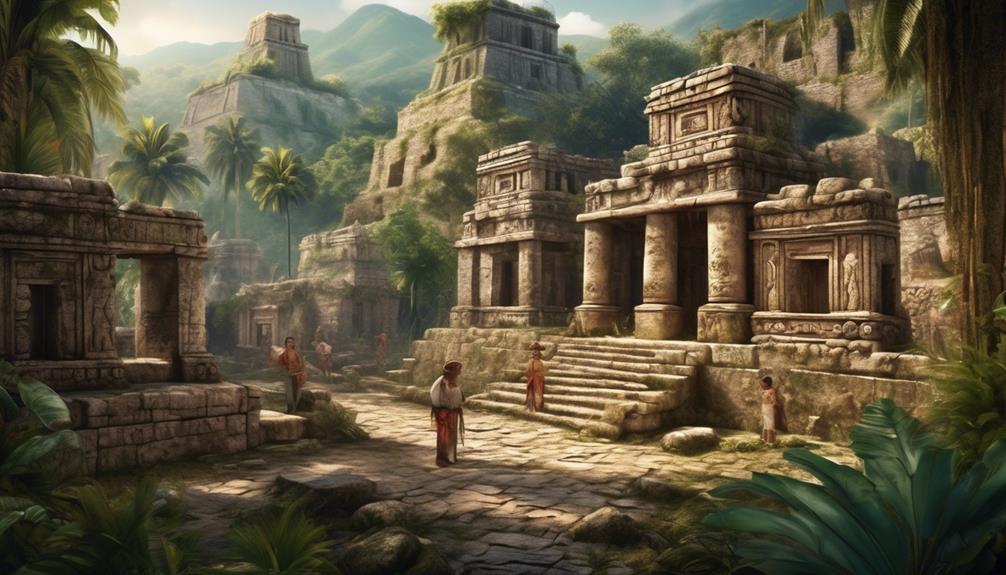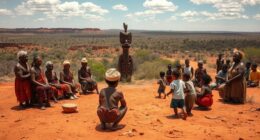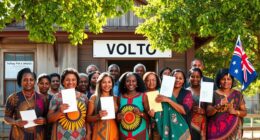Indigenous STEM stars are breaking barriers by showcasing their traditional knowledge and innovative spirit in science, technology, engineering, and math fields. They challenge stereotypes, inspire future generations, and promote cultural representation in labs, classrooms, and conferences. Their work often combines ancestral land management techniques with modern science, advancing conservation and environmental solutions. By advocating and engaging in outreach, they reshape perceptions and foster a more inclusive, diverse STEM environment. Stay tuned to discover inspiring stories of Indigenous innovators making a difference.
Key Takeaways
- Indigenous scientists like Dr. Cindy Blackstock advocate for cultural inclusion and equitable policies in STEM fields.
- Indigenous innovators such as Dr. José Francisco Salazar integrate traditional ecological knowledge into sustainable environmental practices.
- Indigenous STEM leaders like Dr. Kisha Supernant work to elevate Indigenous histories and perspectives through archaeological research.
- Programs supporting Indigenous youth in STEM, like the First Nations University initiatives, foster representation and inspire future scientists.
- Indigenous researchers actively participate in outreach, highlighting their contributions to challenge stereotypes and promote cultural pride.
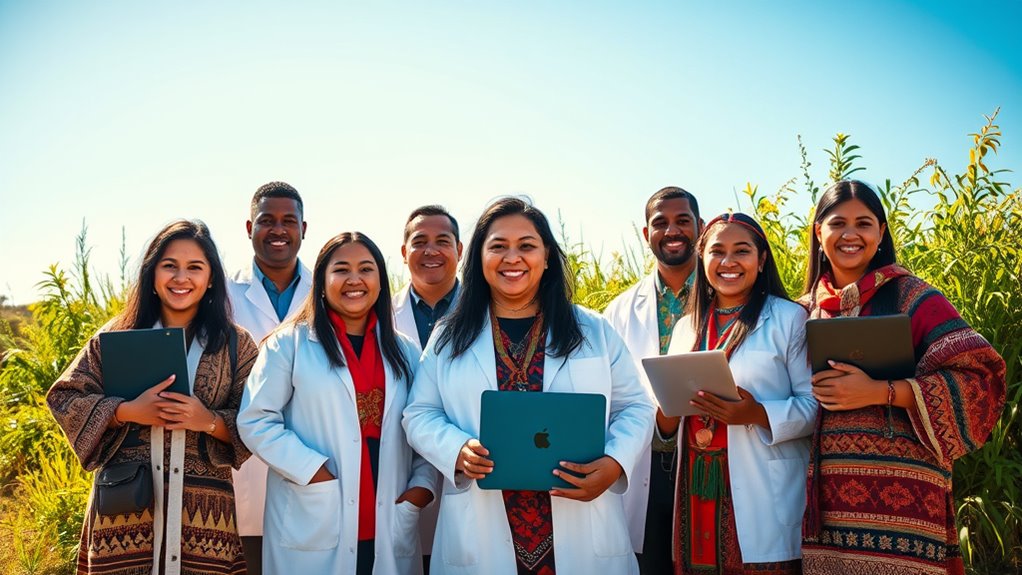
Have you ever wondered how Indigenous scientists and innovators are shaping the future of STEM? These trailblazers are not only making groundbreaking discoveries but also transforming the way society perceives Indigenous communities in science, technology, engineering, and mathematics. One of the most powerful ways they do this is through cultural representation, ensuring that Indigenous identities are visible and celebrated within these fields. By actively participating in STEM, Indigenous scientists challenge stereotypes and showcase the rich knowledge traditions that influence their work. Their presence in labs, classrooms, and conferences helps break down longstanding barriers and opens doors for future generations to see themselves as scientists, engineers, or tech innovators.
Educational initiatives play a essential role in supporting Indigenous STEM stars. Many programs are designed specifically to nurture Indigenous talent from a young age, blending traditional knowledge with modern scientific practices. These initiatives often involve community-led projects, scholarships, and mentorship opportunities that encourage Indigenous youth to pursue careers in STEM. When Indigenous students see their culture reflected in curriculum and research, it creates a sense of belonging and relevance. It’s not just about learning science; it’s about connecting that knowledge to their heritage, environment, and community concerns. This approach fosters pride and motivation, empowering them to become leaders in their fields.
Indigenous innovators are also working to incorporate traditional ecological knowledge into modern environmental solutions. For example, some use ancestral land management techniques to develop sustainable farming practices or conservation strategies. This integration respects Indigenous cultural practices while advancing scientific understanding. Such efforts emphasize that Indigenous perspectives are not separate from science—they are essential contributors. This representation in research and innovation helps to diversify STEM and challenge the misconception that science is culturally neutral or only rooted in Western traditions.
Furthermore, Indigenous scientists are increasingly participating in public outreach and advocacy, making their voices heard on national and international stages. They often organize or participate in educational initiatives that highlight Indigenous contributions to STEM, inspiring communities and policymakers to prioritize inclusive representation. These efforts help to change perceptions, ensuring Indigenous knowledge and experiences are valued and integrated into broader scientific discourse. By doing so, they pave the way for a more equitable and diverse STEM landscape, where cultural identity is seen as a strength rather than a barrier.
In short, Indigenous STEM stars are not just excelling in their fields—they’re actively reshaping the narrative through cultural representation and educational initiatives. Their work demonstrates that inclusive science benefits everyone, fostering innovation rooted in diverse perspectives and lived experiences.
Frequently Asked Questions
How Do Indigenous Cultures Influence STEM Careers?
You might not realize it, but Indigenous cultures influence STEM careers through their rich cultural heritage and traditional knowledge. When you incorporate these perspectives, you gain unique insights into sustainable practices, environmental stewardship, and innovative problem-solving. This blend of ancient wisdom and modern science helps you develop more holistic solutions, fostering respect for nature and community. Embracing Indigenous contributions enriches your STEM journey and promotes diverse, inclusive innovation.
What Challenges Do Indigenous STEM Students Face?
You might face challenges like cultural barriers and resource gaps when pursuing STEM. For example, imagine a student from a remote Indigenous community struggling to access advanced labs or mentorship due to limited resources. These hurdles can hinder your progress, making it harder to succeed. Overcoming cultural barriers requires understanding and support, but the lack of resources remains a significant obstacle that can slow your journey in STEM fields.
How Can Schools Support Indigenous STEM Talent?
You can support Indigenous STEM talent by implementing cultural mentorship programs that connect students with Indigenous professionals, fostering a sense of identity and belonging. Incorporating Indigenous knowledge and perspectives into the curriculum through integration helps validate students’ backgrounds and encourages their participation. By creating inclusive environments and respecting cultural diversity, you empower Indigenous students to thrive in STEM fields and break barriers, contributing to a more equitable and innovative future.
Are There Specific Programs Promoting Indigenous STEM Education?
You’ll find many programs promoting Indigenous STEM education that focus on cultural preservation and integrating traditional knowledge. These initiatives often include mentorship, workshops, and scholarships designed to empower Indigenous students in science, technology, engineering, and math fields. By blending modern STEM with ancestral wisdom, these programs help students honor their heritage while pursuing innovative careers, opening doors and breaking barriers in ways that respect and celebrate Indigenous cultures.
How Do Indigenous STEM Leaders Impact Their Communities?
You see how Indigenous STEM leaders positively impact their communities by fostering cultural preservation and inspiring others through community mentorship. They serve as role models, encouraging youth to pursue science and technology while honoring their traditions. Their efforts strengthen cultural identity, create educational opportunities, and build a sense of pride. By mentoring future generations, these leaders ensure that Indigenous knowledge and values thrive alongside advancements in STEM fields, shaping resilient, empowered communities.
Conclusion
As you see, Indigenous STEM stars are proving that barriers are meant to be broken. Their achievements challenge the idea that race or background limit success, showing instead that determination and talent can defy such notions. Do you think these trailblazers are inspiring enough to change perceptions? The truth is, their stories reveal that diversity fuels innovation. So, next time you doubt potential, remember these pioneers—proof that anyone can reach for the stars and succeed.
